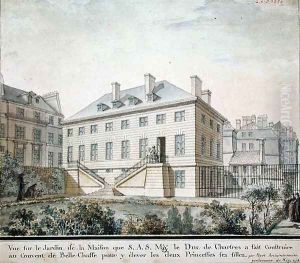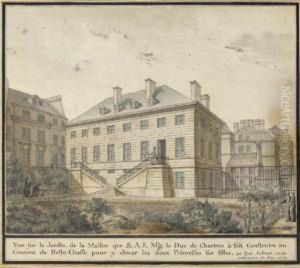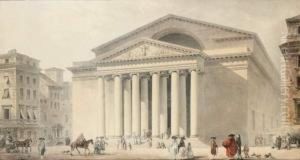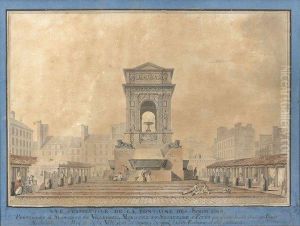Bernard Poyet Paintings
Bernard Poyet was a French architect and urban planner, born in 1742, notable for his contributions to the architectural landscape of Paris during a period marked by significant change and the Enlightenment. Poyet's career spanned the late 18th and early 19th centuries, a time that saw the transformation of Paris into a modern city. His work is characterized by a blend of neoclassical elements, reflecting the predominant architectural style of his era, which emphasized symmetry, simplicity, and grandeur inspired by the classical architecture of Ancient Greece and Rome.
Poyet received his architectural training in the French capital, where he was exposed to the leading architectural ideas of his time. He was particularly influenced by the works of Jacques-Germain Soufflot, the architect of the Panthéon, a masterpiece of neoclassical architecture in Paris. Poyet's education and talent soon garnered the attention of the French aristocracy and the royal court, leading to commissions that would firmly establish his reputation.
Among Poyet's most significant contributions was his involvement in the renovation and design of several Parisian buildings and urban projects. Although not all his proposed projects came to fruition, his plans and visions for Paris left a lasting impact on the city's development. Poyet was also known for his theoretical work and publications on architecture, which contributed to the dissemination of neoclassical principles in France and beyond.
Poyet's career, however, was not without its challenges. The French Revolution and the subsequent political upheavals posed significant obstacles to his work and architectural vision. Despite these challenges, Poyet managed to navigate through these turbulent times, though his opportunities for grand projects were undoubtedly affected.
Bernard Poyet died in 1824, leaving behind a legacy that, while perhaps not as well-known as some of his contemporaries, played a crucial role in the architectural history of Paris. His work and ideas continue to be studied by architects and historians, offering insights into the neoclassical movement and the urban development of one of the world's most iconic cities.




